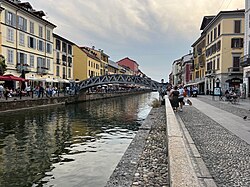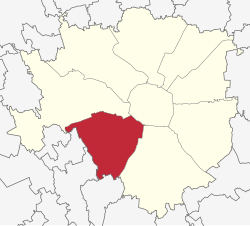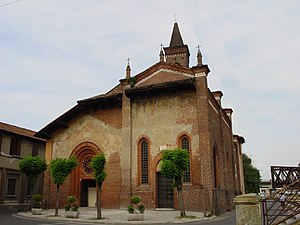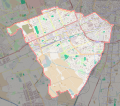
The Naviglio Grande is a canal in Lombardy, northern Italy, connecting the Ticino river near Tornavento to the Porta Ticinese dock, also known as the Darsena, in Milan. It drops 34 m (112 ft) over 49.9 km (31.0 mi). It varies in width from 22 to 50 m from Tornavento to Abbiategrasso, dropping to 15 m (49 ft) between there and Milan. Initially it carries 63 cubic metres per second (2,200 cu ft/s), 116 outlets take water to irrigate 500 square kilometres (190 sq mi) leaving the canal 12 m (39 ft) wide and carrying 12 m3/s (420 cu ft/s) as it enters the dock.

The navigli are a system of interconnected canals in and around Milan, in the Italian region of Lombardy, dating back as far as the Middle Ages.
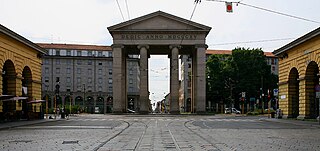
Porta Ticinese is a former city gate of Milan, Italy. The gate, facing south-west, was first created with the Spanish walls of the city, in the 16th century, but the original structure was later demolished and replaced in the early 19th century. The name "Porta Ticinese" is used both to refer to the gate proper and to the surrounding district, part of the Zone 6 administrative division. In the same district there is also a medieval gate with the same name, although in common speech the name "Porta Ticinese" is usually assumed to refer to the 19th century gate.

Porta Genova is a neighborhood ("quartiere") of Milan, Italy, located within the Zone 6 administrative division. The name "Porta Genova" means "Genoa gate"; the district is named after a city gate of the old Spanish Walls of Milan, namely that leading to Genoa, that used to be in what is now Piazza Cantore. The only remnants of the old gate are the small buildings that used to house the customs offices, which replaced the Spanish gate in the 19th century.

Ronchetto sul Naviglio is a district ("quartiere") of Milan, Italy, part of the Zone 6 administrative division of the city. Before being annexed to Milan, it has been an autonomous comune until 1870, and a frazione of Buccinasco between 1870 and 1923.

Giambellino and Lorenteggio are two historical and populous residential neighborhoods of Milan, Italy. Together, they form a district ("quartiere"), part of the Zone 6 administrative division of Milan.

The Zone 2 of Milan, since 2016 officially Municipality 2 of Milan, is one of the 9 administrative divisions of Milan, Italy.
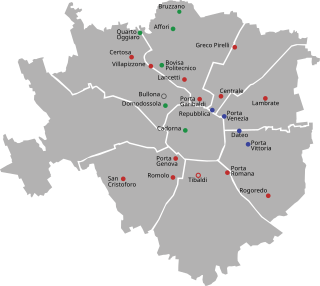
Milan has 24 railway stations in use today. Of these, 18 are managed by RFI, while the remaining 6 are operated by Ferrovienord. Three more stations are currently in the planning stage for the city area: Canottieri, Dergano and Zama.
Corpi Santi di Milano is a former Italian comune, established in 1782 and annexed to Milan in 1873. It comprised the rural territory around the city walls of Milan. It was originally known just as Corpi Santi; "di Milano" was added in 1859, possibly to avoid confusion with the comune with the same name located in the area of Pavia.

The Oratorio di San Protaso is a church in via Lorenteggio, Milan, Lombardy.
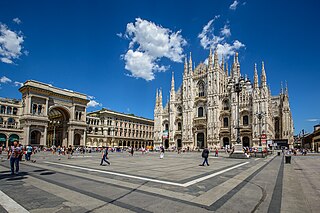
The Zone 1 of Milan, since 2016 officially Municipality 1 of Milan, is one of the 9 administrative divisions of Milan, Italy.

Parco Papa Giovanni Paolo II, best known by its historic name Basilicas Park is a city park of Milan, Italy, located in Zone 1. It owes its name to the fact that it connects two major basilicas, the Basilica of San Lorenzo and the Basilica of Sant'Eustorgio. The park has an overall area of 40.700 m2, bisected by Via Molino delle Armi, one of the avenues comprising the Cerchia dei Navigli ring road.

The Medieval Porta Ticinese is a gate of the former 12th-century Walls of Milan; it is located at the intersection of the Corso di Porta Ticinese and Via Edmondo de Amicis and Via Molino di Armi in the city center of Milan, region of Lombardy, Italy. This is one of the three remaining medieval gates of Milan. The others are Porta Nuova and the Pusterla di Sant'Ambrogio.

Porta Nuova is one of the three medieval gates of Milan that still exist in the modern city. It is sited along the ancient "Navigli Ring" on the perimeter of the medieval walls of the city.

The Zone 5 of Milan, since 2016 officially Municipality 5 of Milan, is one of the 9 administrative divisions of Milan, Italy.
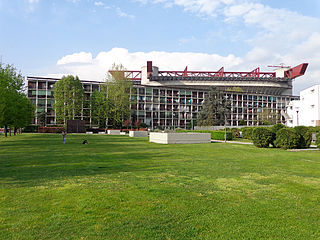
The Zone 7 of Milan, since 2016 officially Municipality 7 of Milan, is one of the 9 administrative divisions of Milan, Italy.
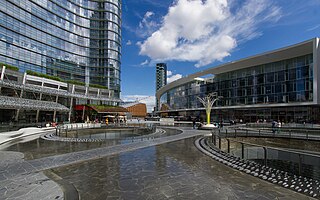
The Zone 9 of Milan, since 2016 officially Municipality 9 of Milan, is one of the 9 administrative divisions of Milan, Italy.

The following outline is provided as an overview of and topical guide to Milan:

The hydrography of Milan and the area of the neighboring municipalities is particularly complex, both for natural causes, given the conspicuous presence of rivers, streams and fountains that form a real water tangle, and for issues related to the work of canalization and diversion of waterways made by man, having their beginning during the Roman era, which led to the creation of numerous irrigation ditches, canals and lakes.
